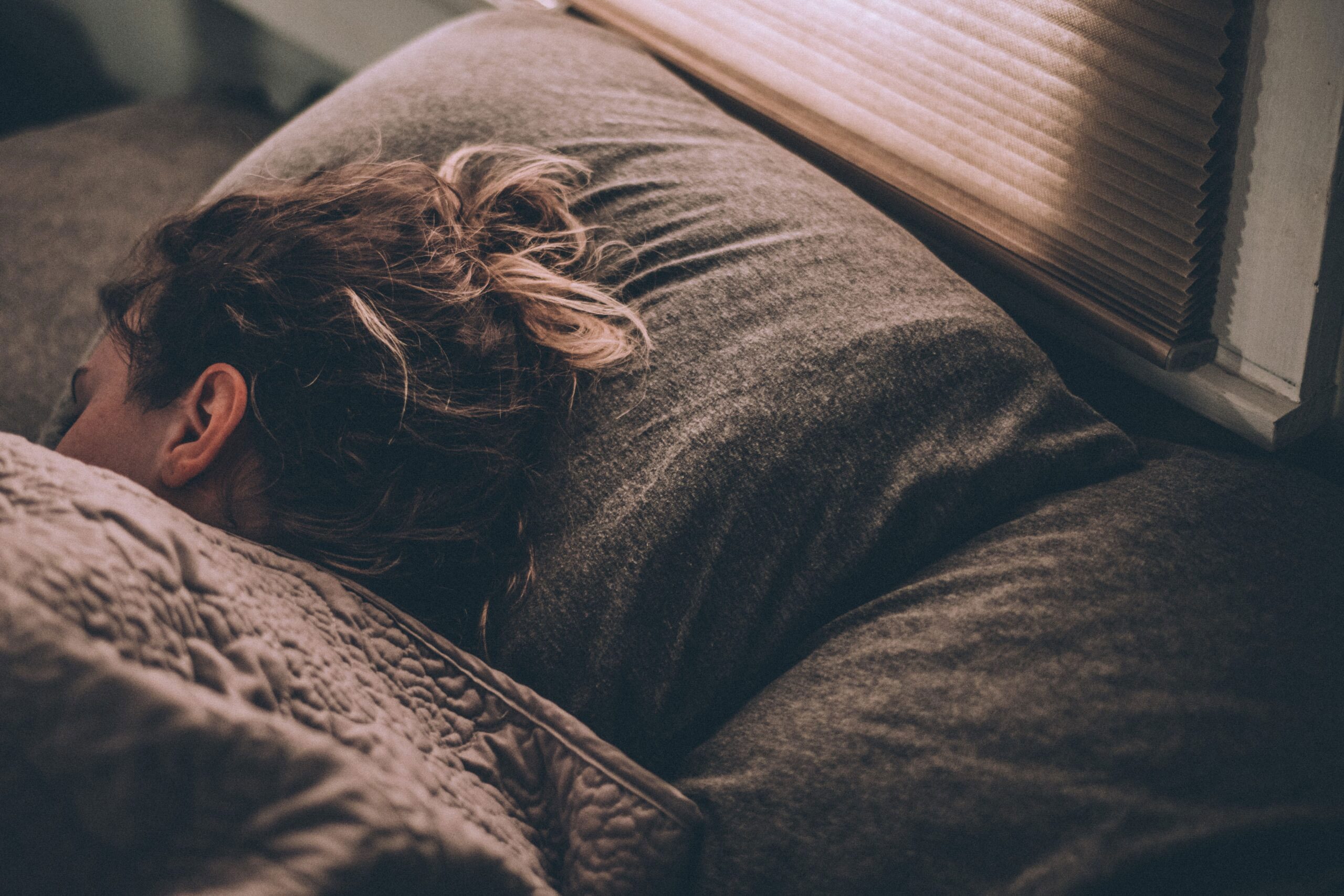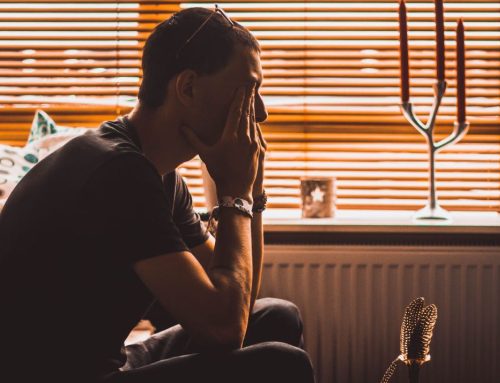Sleep is one of the most important factors in having a healthy, balanced lifestyle.
Sleep can determine our mood, behavior, level of activity, and so on. Most people can say that if they do not sleep well one night, the next day or even next few days may result in feeling sluggish and irritable. While it is normal to occasionally have a bad night’s sleep, a significant part of the population suffers from sleep disorders.
Insomnia and other Sleep Disorders
Two common types of sleep disorders are Insomnia and Obstructive Sleep Apnea (OSA). Insomnia is a persistent difficulty with initiating, consolidating, quality of, or duration of sleep. It is estimated that between 30 and 48 percent of adults suffer from insomnia1. OSA is a sleep disorder that causes you to repeatedly stop and start breathing while sleeping. This particular sleep disorder occurs when the throat muscles intermittently relax and block the airway during sleep2.
Symptoms of OSA
- Excessive daytime sleepiness
- Loud snoring
- Decreased libido
- High blood pressure
- Changes in mood (commonly irritability or depression)
- Trouble concentrating
- Dry mouth or sore throat upon waking up
- Abrupt awakenings with gasping or choking
- Observed episodes of stopped breathing during sleep3.
What to do if these symptoms sound like you?
If you think you may be dealing with a sleep disorder, talk to your doctor. A possible option is to request a sleep study, which can diagnose any sleep disturbances. For individuals with OSA, this can be imperative in order to start treatment to ensure safe sleeping.
Types of CBT Utilized for Sleep
Stimulus Control
Stimulus is anything that causes a response. This method is specifically for those who find themselves tossing and turning in bed while not being able to fall asleep. When this happens excessively, some find themselves dreading going to sleep, with the expectation that they will once again be tossing and turning for hours. When this happens it can lead to viewing bedtime and specifically the bed itself in a negative way.
This method encourages one to only utilize the bed for sleep and sex only. This involves not going to bed for anything other than these two activities. This eliminates reading, watching T.V., playing games, or any other activity in bed. Additionally, this method involves only going to sleep when feeling very tired. If utilizing this technique, you are to give it 20 minutes in bed, but after that time if you are unable to sleep you get out of bed to do something relaxing, until feeling sleepy again.
The idea behind this is to eventually turn the negative response of bed and bedtime into a positive and making it easier to fall asleep more quickly4.
Sleep Restriction
This method aims at eliminating consistent middle of the night awakening. The first step in this process is to eliminate the initial time spent in bed, which then leads to slowly increasing the time spent in bed. To figure out the initial amount of time in bed an average will be calculated from the amount of sleep received the previous week. For example, for someone who typically is in bed for 9 hours but only sleeps 6 hours, they will then cut back to 6 hours in bed, which in time will allow for more sleep time and less time spent laying in bed.
Typically, those who utilize this technique find marked improvement in sleep quality after the first week. After this the individual extends the time spent in bed by 15-30 minutes at a time, as long as their time awake in the middle of the night remains minimal. Each time the time in bed is extended it should be continued for at least a week before being extended again5.
Relaxation Training and Biofeedback
The idea behind relaxation training is to learn how to relax your mind and body simultaneously. Anxiety can oftentimes leave ones mind feeling overwhelmed and therefore can prevent sleep. This allows for better controlling muscle relaxation, breathing, and mental focus. These relaxation techniques can be utilized during the daytime and when going to sleep.
Breathing Exercises
Through Cognitive Behavioral Therapy (CBT), a variety of breathing exercises can be discussed. Exercises typically involve slow, deep breathing. Research has shown that focusing on deep breathing can not only slow down the heart rate and breathing, but can also reduce anxiety, anger, and depression symptoms6.
Progressive Muscle Relaxation (PMR)
PMR is an exercise which involves tensing and relaxing different muscle groups to release tension from the body. This can be accompanied by breathing techniques and/or guided imagery7.
Autogenic Training
This exercises is utilized to adjust ones focus to different parts of the body that experience different sensations, such as heaviness, warmth, relaxation, etc8.
Hypnosis
One can utilize hypnosis on their own or through the use of a guide. It involves receiving a verbal or non-verbal cue, which prompts one to relax.
Meditation
Meditation can be utilized to reduce stress and anxiety, as well as increasing one’s ability to relax. This can also be combined with exercises, such as yoga or tai chi9.
Biofeedback can go along with relaxation training. Biofeedback can provide details on the bodies muscle tension, brain waves, blood pressure, heart rate, and body temperature. A device can be worn to signal the current level of muscle tension or brain wave frequency. The individual will then attempt to make changes to a level that helps with sleep, through using the devices gauge, visuals, and sounds10.
CBT and Psychotherapy
CBT and Psychotherapy can assist the individual to identify what beliefs, behaviors, and moods may be hindering their sleep. These negative ideas can lead to staying awake even when the body and brain are ready for rest. The therapist assists in uncovering thoughts and feelings related to sleep.
This can involve a variety of techniques, such as scheduling ‘worry time’ earlier in the day, which can be utilized to make plans for the next day. After this scheduled time it can lead to a feeling of being ‘allowed’ to have relaxation and can allow you to be at ease when it is time to sleep11.
Sleep Hygiene Training
This technique involves recognizing what habits are preventing sleep and correcting them. Sleep hygiene refers to the tips that help create a healthy sleep pattern. This takes into account a variety of factors that can impact sleep, such as level of daily activity, caffeine intake, time spent in bed, etc.12 Through learning better habits and implementing these, it can greatly impact the amount of sleep one is receiving.
Some basic tips for proper sleep hygiene:
- Having a regular sleep schedule that involves a basic time you go to sleep and wake up can be incredibly important for healthy sleep. This can involve keeping a similar schedule during weekends too, as your body becomes accustomed to a rhythm, which helps to fall asleep.
- If struggling to sleep, get up and attempt to find something relaxing to do outside of bed until you begin feeling tired.
- Create a routine to follow each night before bed. This can involve taking a bath, turning off electronics, reading, or doing any other relaxing activity to help you start to rest for the evening.
- Avoid alcohol, food, and caffeine close to bedtime.
- Make sure you are exercising early enough in the day, as working out too close to bedtime can make sleep difficult due to increased body temperature, which delays sleep13.
Sleep Environment Improvement
This is a process of changing the environment where one sleeps. This can involve things such as taking a television out of the bedroom, removing any clocks from view, creating a cool, quiet, and dark atmosphere. This technique tends to be a good starting point for people dealing with sleep problems, as the environment itself may be the simple cause of sleep disturbances14.
Starting CBT for Sleep
If you have been experiencing excessive trouble with sleep, it may be beneficial to speak to a licensed therapist. Through the different techniques discussed above, a licensed therapist can assist in finding the right solution for you. Therapists through Online-Therapy.com provide Cognitive Behavioral Therapy (CBT).
Our platform offers a complete online therapy toolbox which includes time with a personal therapist who can support your through your journey. If this is something you are interested in, we would love to hear from you!
References
AASM Sleep Education. What is Cognitive Behavioral Therapy? (https://sleepeducation.org/patients/cognitive-behavioral-therapy/). Accessed on 03/15/22.
Mayo Clinic. Insomnia Treatment: Cognitive Behavioral Therapy instead of Sleeping Pills. (https://www.mayoclinic.org/diseases-conditions/insomnia/in-depth/insomnia-treatment/art-20046677). Accessed on 03/15/22.
Mayo Clinic. Obstructive Sleep Apnea. (https://www.mayoclinic.org/diseases-conditions/obstructive-sleep-apnea/symptoms-causes/syc-20352090). Accessed on 03/20/22.
Sleep Foundation. Cognitive Behavioral Therapy for Insomnia (CBT-I). (https://www.sleepfoundation.org/insomnia/treatment/cognitive-behavioral-therapy-insomnia). Accessed on 03/15/22.
Sleep Foundation. Insomnia. (https://www.sleepfoundation.org/insomnia). Accessed on 03/20/22.
Stanford Health Care. Cognitive Behavioral Therapy for Insomnia. (https://stanfordhealthcare.org/medical-treatments/c/cognitive-behavioral-therapy-insomnia/procedures.html). Accessed on 03/15/22.




Leave A Comment